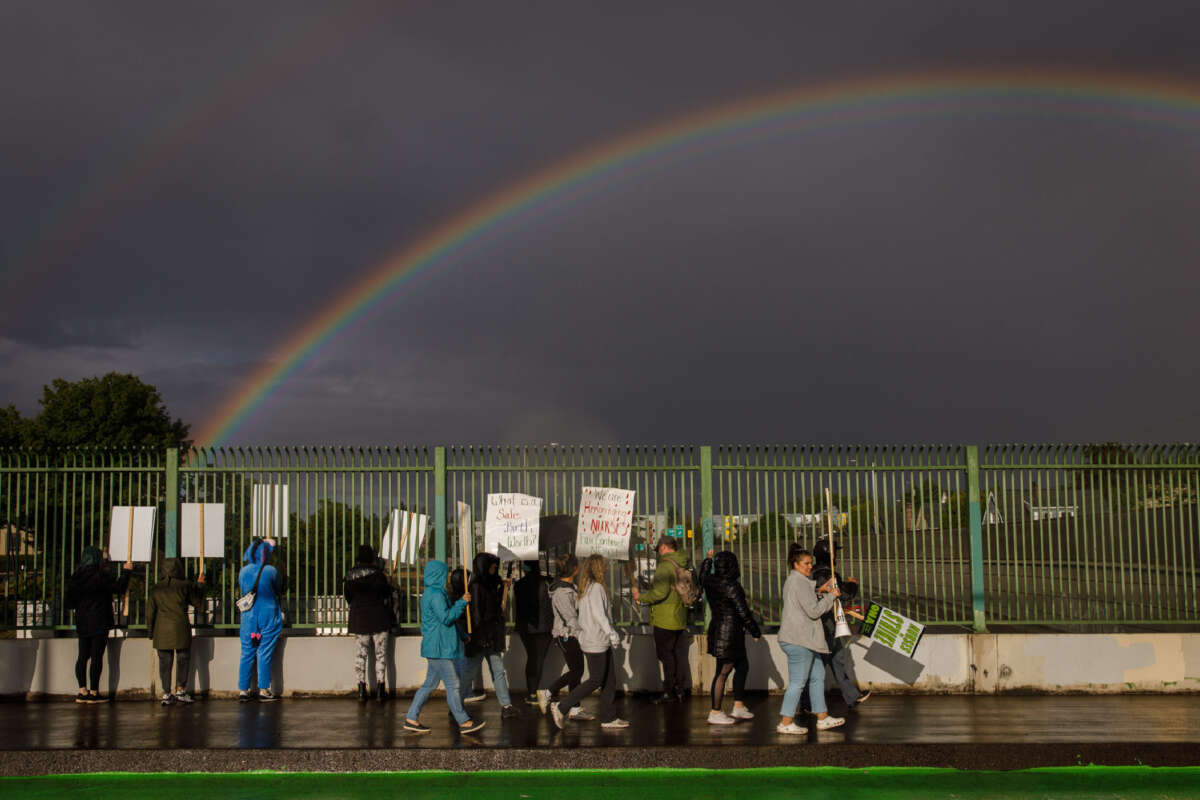Honest, paywall-free news is rare. Please support our boldly independent journalism with a donation of any size.
Last year saw more large strikes across the U.S. than any other year this century so far, new data finds, backing the idea that the labor movement is undergoing a renaissance after being in decline for decades.
According to Bureau of Labor Statistics (BLS) data released Wednesday, there were 33 major work stoppages beginning in 2023, the highest number of strikes since 2000, when there were 39 stoppages. This is an increase from the 23 major stoppages that began in 2022, which already saw a precipitous increase in the number of workers involved in stoppages, and double the average number of strikes per year over the past 20 years, at 16.7.
Notably, the number of workers involved in major stoppages also increased dramatically in 2023, at 459,000 workers, nearly three times the 160,000 workers in major strikes and stoppages in 2022. In fact, this is the largest cohort of picketing workers since 2018, when 485,000 workers striked, largely driven by the massive wave of teacher strikes that swept the country.
Both the number of workers who went on strike and the number of strikes indicate that 2023 was a significant year for the labor movement.
Last year saw historic strikes waged by the Screen Actors Guild and Writers Guild of America, United Auto Workers with its bold Stand Up Strikes, and Kaiser Permanente health care workers across the West, as well as smaller strikes by Starbucks workers. A strike by UPS workers, which would have been the largest single-employer strike in U.S. history, was narrowly avoided after the company gave in to some pay and benefits concessions.
The latest BLS data isn’t entirely representative of every strike or work stoppage waged in 2023. Due in part to conservative budget cuts, the agency only records strikes waged by over 1,000 workers.
A more comprehensive report by the Cornell University School of Industrial and Labor Relations released recently also found that there was an increase in strikes in 2023 over previous years. The report documented 470 stoppages in total, with 539,000 workers involved, for a total of 25 million strike days logged by workers last year. This is an increase in the number of workers involved in stoppages of 141 percent, or more than double the number of striking workers in 2022.
Though 2023 was a notable year for modern labor struggles, the number of strikes and stoppages pale in comparison to that of decades prior to the 1980s, when it was common to see hundreds of major stoppages each year; the highest number the bureau has ever recorded in a year was 470 in 1952, whereas the lowest was five in 2009.
Labor actions and organizing plummeted during the 1970s and 1980s, with the ushering in of neoliberal economic policies led by figures like Ronald Reagan. It was then that the labor movement in the U.S. began to crater due to harsh anti-union and pro-employer policies, with union membership lowering from historic highs of about 30 percent to its current all-time low of a mere 10 percent, according to BLS data.
While the legal and regulatory framework in the U.S. is still largely hostile to unions and labor organizing, however, there are some positive signs for the labor movement. Though the BLS has reported that the proportion of workers in a union was at only 10 percent in 2023, the sheer number of workers in a union increased, the agency found, which can be explained by the large number of non-union jobs that were added to the economy in 2023.
Labor advocates have said that the fact that unions are still picking up members despite a difficult landscape for organizers is a show that workers are interested in unionization, but are facing obstacles in organizing their workplaces.
“Despite the continued popularity of unions among workers and the public, we have yet to see this momentum translate into substantial increases in the number of workers represented by a union,” read a recent Economic Policy Institute report on the latest BLS union rates. “What is causing this disconnect? Simply put, decades of policy decisions have made it harder for workers to form unions and bargain collectively.”
Press freedom is under attack
As Trump cracks down on political speech, independent media is increasingly necessary.
Truthout produces reporting you won’t see in the mainstream: journalism from the frontlines of global conflict, interviews with grassroots movement leaders, high-quality legal analysis and more.
Our work is possible thanks to reader support. Help Truthout catalyze change and social justice — make a tax-deductible monthly or one-time donation today.
